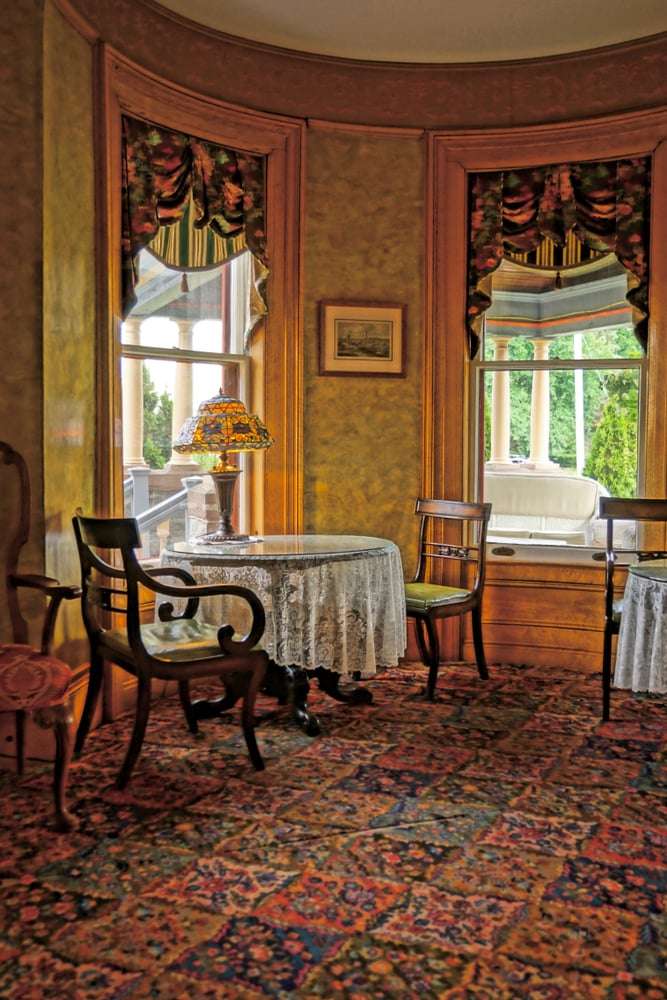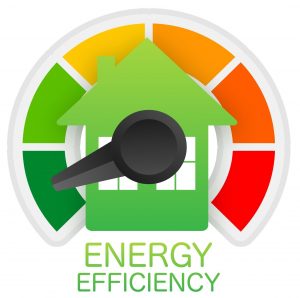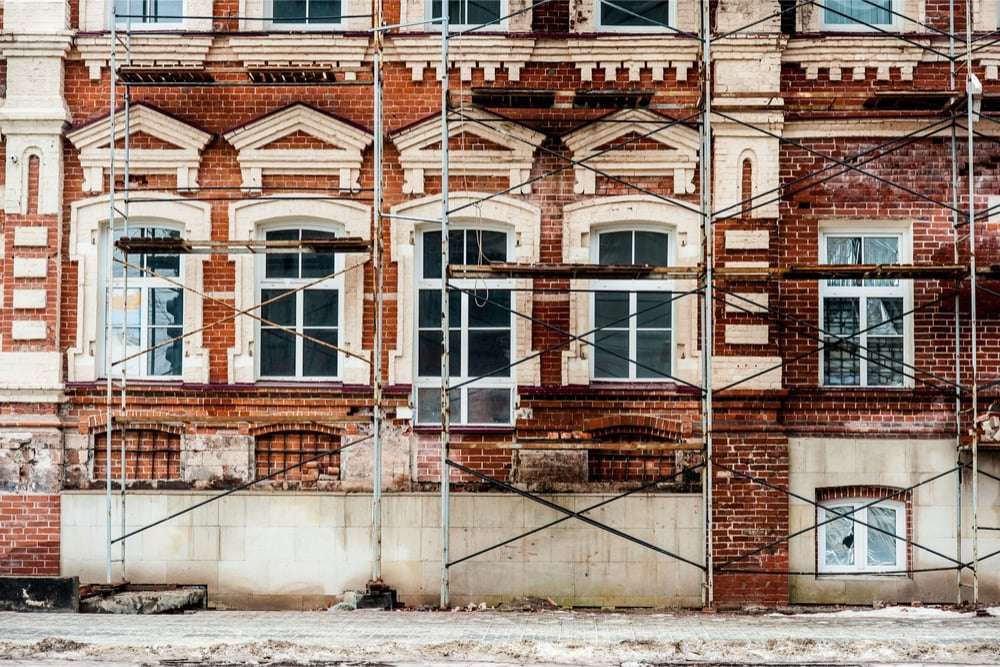Historic architecture is important to maintain because of its cultural value. Some of these buildings, however, are not entirely fit for modern standards of sustainability. Such historical buildings include houses that must be retrofit before they can be lived in again. Do they have centralized air conditioning or heating? Are there unsealed doors and windows that might be leaking the indoor air and driving up energy consumption? These are just a few questions to consider when looking to rehabilitate a building for sustainable initiatives.
Rehabilitating a building is a noble pursuit in and of itself. Construction, and the processes of manufacturing building materials, consume a lot of energy. There are so many vacant buildings all throughout the United States. It is of critical importance to sustainable initiatives that we utilize the resources we have before creating more.
The operative word here is “rehabilitation.” This is somewhere between renovation and restoration: bringing a building up to modern standards without compromising its historical value. Are we being a bit semantic here? Perhaps, yet there are precise guidelines to dictate how historic buildings can be rehabilitated.
The Secretary of the Interior’s Standards for Rehabilitation state that “rehabilitation” is the process of altering or repairing an old building in order to make it useful without destroying its defining historic features. These “Secretary’s Standards” present an interesting challenge.
Can historic buildings incorporate energy-efficient, sustainable upgrades and still maintain their old-world splendor? They certainly can – and we’re here to break down the nuances of sustainable restoration.
The Standards for Rehabilitation
The Secretary of the Interior’s Standards for Rehabilitation are comprised of ten criteria that address common issues regarding the restoration of old buildings.
Each standard is explained below:
Standard 1
A historic property should be used as it was originally intended. A building can be used for a new purpose if it requires only minimal changes to the historic qualities and features of the building.
Standard 2
Removing or altering historic materials and features should be avoided. Renovations should not destroy the historic character of a property.
Standard 3
Historic buildings are considered records of their time. Don’t execute changes that make a building look older or newer than it really is. This includes adding architectural features or elements from other buildings.
Standard 4
A very old building has likely changed over time. New elements may have been added over the years. Any changes that have acquired historical significance on their own should be preserved.
Standard 5
Historic buildings have distinctive finishes, examples of craftsmanship, and features, all of which must be preserved.
Standard 6
If a building has historic features that have deteriorated or are damaged, they must be repaired instead of replaced unless they are damaged beyond repair.
Anything that is replaced must match the old feature in texture, design, color, and when possible, materials. If you replace a feature in a historic home, you should document the replacement with photos, receipts, and other applicable evidence.
Standard 7
If you need to clean the surfaces of structures and features of an old building, you should use the gentlest methods and products possible. Any physical or chemical treatments that would damage any of the historic materials of an old building should not be used.
Standard 8
Any archeological features that are involved in a restoration project need to be preserved and protected. So if you need to temporarily move a feature from its original location, you must take steps to protect it while it is in its temporary location, whether on- or off-site.
Standard 9
Many people build additions or add new construction to old buildings. Whenever this kind of project is undertaken, the new additions cannot destroy any of the characteristic materials or features of the building.
New additions must also match the size, scale, and architectural style of the original building so that its historic integrity is not compromised.
Standard 10
If you build an addition or new construction to an old building, you should make sure that if the addition is removed in the future, it can be done in a way that won’t compromise the basic form of the original building.
U.S. Guidelines on Sustainability
The Secretary of the Interior also offers guidelines on sustainability for rehabilitating historic buildings. These guidelines provide valuable information regarding everything from windows, HVAC, and insulation to solar technology and wind power in historic buildings.
The sustainability guidelines highlight the fact that historic buildings are often inherently sustainable. This should be used to a building’s advantage in any proposals to restore it.
The guidelines serve as written instructions with examples of appropriate treatments that are recommended, along with inappropriate treatments that could negatively impact a building’s character.
Sustainability guidelines pertain to historic buildings of all materials, construction types, occupancy, and sizes. They apply to interior and exterior work, any new additions, and the site of the building and its environment.
How to Successfully Complete Sustainable Initiatives That Are Compatible with Historic Restoration
As you might imagine, there is an extraordinary amount of information available regarding what is and is not recommended during efforts for the historic preservation of a building.
Meshing historic redevelopment with eco-friendly efficiency to create historic sustainable homes requires some due diligence, but it can be done if you consider a handful of ideas for legitimately sustainable changes.
Focusing on these areas of change will get you off to an excellent start with your project. These areas of focus are:
- Choosing the easiest rooms for retrofit buildings
- Organizing the project according to the easiest and hardest areas
- Select sustainable building materials that look natural in historic buildings
- Determining when a building needs historic redevelopment
- Focusing on small, sustainable changes
- Honoring the importance of historic architectural preservation
The previously mentioned guidelines are general and cannot tell property owners or developers which features are important in defining the historic character of a building. You must seek the assistance of a qualified historic preservationist early on in your project to make this determination.
Choose the Easiest Rooms to Retrofit Buildings

For example, a parlor is likely easier to incorporate efficient upgrades into than a kitchen because kitchens require many unique considerations (like exhaust fans over cooking surfaces and large appliance integration).
Beginning your project by separating the easier rooms from the more complex rooms will allow you to accurately determine what you may be up against.
Many people elect to begin with building areas that don’t require such extensive consideration, but there is no rule stating that it must be this way. Many others choose to tackle the most complex issues first.
Organize the Project According to the Easiest and Hardest Areas
Within each room, there will be sub-projects that will require more attention than others. For example, painting a ceiling often requires much less elaborate attention than, say, overhauling electrical work or introducing insulation into 100-year-old walls.
Organizing your project into “easy” and “not-so-easy” tasks will help you gauge the workflow and progress of your historic redevelopment endeavor better.
Select Sustainable Materials That Look Natural in Historic Buildings
One of the best things you can do to help your project meet the Standards and Guidelines of the Secretary of Labor is to choose sustainable building materials that look like they were originally meant to be in your building.
Two areas where you can make the easiest and most significant changes are the floors and the lighting.
Eco-Friendly Flooring for Historic Sustainable Homes
A very effective way to incorporate sustainable, natural building materials is by choosing the best sustainable flooring for your building.
Although hardwood flooring is a popular choice for many historic projects, bamboo flooring presents the same gorgeous, timeless look as wood. It’s also sustainable, more durable than hardwood, and impressively eco-friendly.
Consider carbonized antiqued bamboo flooring to provide a rustic, old-world feel with wide-width planks. With carbonized hand-scraped strand bamboo flooring, the natural fibers have been heated through a carbonization process, which enhances the rich, dark colors in the planks that historic buildings are known for.
The surface of carbonized antiqued bamboo floor planks is also fitting for historic preservation projects because of its texture. Unlike the smooth floors common in many newer buildings, these planks are distressed with a texture that can only be created by scraping the bamboo by hand.
In addition, two staining techniques are used, one lighter than the other, to further enhance the old charm feel of these bamboo floors.
Not sure if bamboo would be durable enough for your project? Strand-woven bamboo floors test as the hardest wood floors on the Janka hardness scale.
As it grows, bamboo absorbs carbon dioxide and releases 30% more oxygen than an equivalent mass of trees does. Bamboo grows 80% faster than hardwoods, making it a superior option for sustainability and eco-friendliness.
Eco-Friendly Lighting for Historic Buildings

The very best light for any application, of course, is natural lighting, so use sunlight wherever possible. However, it is sometimes necessary to augment that light with artificial light. Supplementing natural light with LEDs can help put light exactly where it’s needed without doing so at the expense of the environment.
Choose artificial lighting carefully. Use dimmer switches and warm LED lights in historic buildings to maintain the darker old-world aesthetic that contributes to a building’s character.
Determine When a Building Needs Renovations
Turning historic buildings into sustainable homes includes knowing when and what to renovate. Choosing appropriate treatments for a building of this nature is critical. When a building no longer meets continuing or changing uses or building codes, rehabilitation acknowledges the need to alter the building to correct that situation.
The need for a renovation depends on many different factors, including the building’s historical significance, its proposed use, its physical condition, and government-mandated code requirements.
Determine the degree of material integrity of the building before beginning work. Are alterations integral to the building’s history? Has the original form survived mostly intact?
If the building requires additions or alterations for use, renovation is warranted. If distinctive features, materials, and spaces are largely intact, preservation may be appropriate instead.
Even if a building is physically in perfect condition, renovations are in order if it does not meet mandated code requirements. Modifications to the appearance of old buildings can and should be limited as much as possible when bringing systems (such as electrical or plumbing) up to code.
Lead paint and asbestos must be abated with extreme care in order to avoid adversely affecting historic aesthetics.
Focus on Small Sustainable Changes
Perhaps the simplest actions you can take when restoring an old building for eco-friendliness involve incorporating small changes that make a big difference.
Switch Standard Incandescent Bulbs to LED Lighting
As previously mentioned, switching light sources to low-energy LEDs is one such small change that can have a big impact on the carbon footprint your historic building leaves.
Swap Outdated Appliances for Low-Energy Ones

Dishwashers, machines for laundry care, refrigerators, freezers, ovens, cooktops, and other essential appliances can all be replaced with more efficient, environmentally friendly ones. The same holds true for large household systems like the furnace, air conditioner, and water heater.
Seal All Windows and Doors
Sealing windows and doors can make an impressive difference in a building’s environmental impact, as well. You might be surprised at just how much air leaks through poorly sealed openings in buildings. The potential energy savings of sealing can easily reach hundreds, if not thousands, of dollars each year.
The Importance of Preserving Historical Architecture
Completing sustainable initiatives is compatible with historic restoration when done carefully, thoughtfully, and correctly. When making legitimately sustainable changes, keep flooring to ceilings and everything in between on top of mind.
While some changes are small and simple, others will likely present more of a challenge. However, when tasks are divided according to difficulty and separated by room, it becomes easier to organize sub-tasks within a project to make the entire historic preservation undertaking run more smoothly.
Historic preservation is in its own right environmentally sustainable and responsible. It conserves resources, reuses and repairs existing buildings, reduces waste, and keeps the aesthetic and cultural history of its surroundings alive. This connects people to the past and gives them a “sense of place” that can stabilize communities and bring people together.
We transmit our understanding of the past to future generations by preserving historic architecture. Old buildings are essential to the unique identity and character of their communities; they tell a story of heritage and foster civic pride.
When eco-friendly changes are incorporated into plans for restorations, old buildings also represent the ability to retain old-world charm while looking to an environmentally responsible future.
At a time when communities across the country grow weary of the COVID-19 health crisis, and as citizens become increasingly concerned about the environment in which we live, old buildings play an important role: They provide a reassuring link to the past.

About the Author
Meet Bridgett, your friendly neighborhood green building guru! With more years of experience than she’d like to admit, Bridgett is your go-to expert for all things eco-friendly construction. She’s on a mission to make your home the envy of every tree hugger in town (and maybe even the squirrels 🐿️). Let’s build a greener, funnier, and all-around better world together – one enlightened eco-conscious choice at a time!


